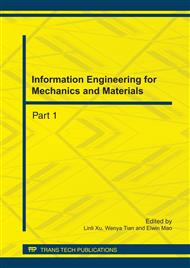p.501
p.506
p.511
p.516
p.521
p.527
p.532
p.536
p.542
On Structure Function and the Temperature and the Thermal Stress of Brake Discs
Abstract:
The geometry and the arrangement of a brake pad for railway vehicles are the important influencing factors for distribution of the temperature and the thermal stress in a brake disc,and closely related to the thermal fatigue damage of the brake disc. The conception of structure function is presented with the view that friction strength on the brake disc is related to the geometry and the arrangement of the pad. Non-uniform heat sources model are suggested based on the structure function, and the temperature and the thermal stress of the brake disc are simulated with FEA software ABAQUS for four difference arrangements brake pads. The results show that changing patterns of the temperature and the thermal stress on brake disc surfaces are coincided with that of structure function. While the peak value of structure function is smaller and the distribution uniformity is better, the temperature and the thermal stress on the corresponding brake disc surface are lower, and distribution is more uniform. Structure function connects the geometry and the arrangement of the brake pad with the friction contact relationship of the brake disc, reflects distribution law of the temperature and the thermal stress and solves the problem of creating a heat source model.
Info:
Periodical:
Pages:
521-526
Citation:
Online since:
July 2011
Authors:
Keywords:
Price:
Сopyright:
© 2011 Trans Tech Publications Ltd. All Rights Reserved
Share:
Citation:


